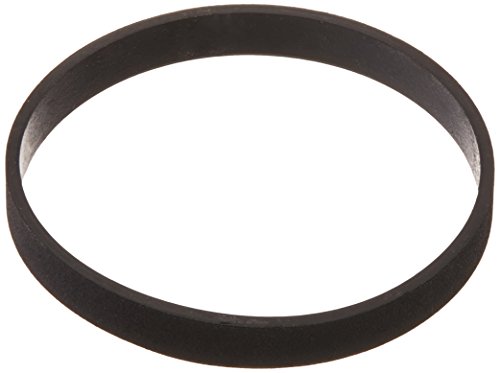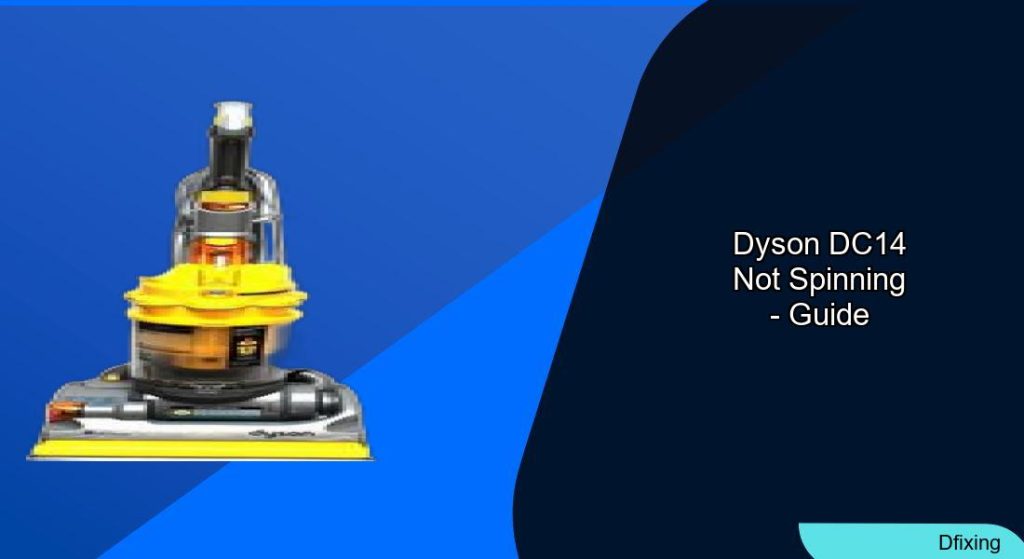The Dyson DC14 vacuum cleaner is a reliable tool for household cleaning, but a non-spinning brush roll can severely impact its performance. Common culprits include clutch failure, belt wear, blockages, or mechanical damage. This article walks you through diagnosing and resolving these issues, from simple debris removal to clutch replacement, while offering maintenance tips to prevent future problems.
Affiliate disclosure: As an Amazon associate, We'll earn a commission for every successful order through our affiliate links in the article. However, you won’t be charged anything for this.
Understanding the root cause is key to efficient repairs. Symptoms like a silent brush roll, unusual noises, or weak suction often point to specific components. By following this guide, you’ll learn how to inspect critical parts, replace worn elements, and restore your vacuum’s functionality. Whether you’re troubleshooting a faulty clutch or clearing tangled hair, this step-by-step resource covers everything you need to know.
Diagnosing Common Causes
Brush Roll and Blockage Checks
Start by unplugging the vacuum and inspecting the brush roll for debris. Hair, string, or carpet fibers often wrap around the roller, preventing rotation. Use scissors to cut away obstructions and manually spin the brush roll to confirm smooth movement. If it resists, further disassembly may be needed.
Clutch Failure Indicators
The clutch engages the brush roll when the vacuum reclines. If the roller spins freely by hand but not during operation, test the clutch:
1. Remove the brush roll assembly using a Phillips screwdriver.
2. Check for wear or cracks in the clutch housing.
3. Engage the clutch manually—it should produce a loud clicking noise when functional. Silence indicates a faulty clutch requiring replacement.
If the clutch is silent or shows visible damage, it needs to be replaced to restore the brush roll’s functionality.

Official replacement for brush roll clutch system with drive belts

OEM-authorized clutch assembly with drive belts for Dyson models
Belt Wear and Alignment
Two belts connect the motor to the brush roll. A loose, cracked, or misaligned belt fails to transfer power. Inspect both belts for damage and ensure they’re seated correctly on the motor shaft and clutch pulleys. Replace both belts simultaneously for optimal performance, even if only one appears worn.
Replacing both belts ensures consistent performance and prevents future issues related to belt failure.

Official replacement belt for optimal performance

Premium OEM clutch system replacement

Cost-effective belt replacement solution

Value pack with multiple belt replacements
Step-by-Step Clutch Replacement
Tools and Preparation
Gather a T15/T10 Torx screwdriver, snap ring pliers, and a clutch replacement kit (Part # 904174-01). Set the vacuum to hard floor mode and remove the brush roll assembly.
Disassembly and Installation
- Remove the clutch housing with T15 screws.
- Extract the old clutch using needle-nose pliers, noting brittle components.
- Disassemble the clutch plate, retaining snap ring, spring, and bearings.
- Install the new clutch, ensuring bearings fit into designated indentations.
- Reattach the snap ring with pliers and reassemble the housing.
Reinstallation and Testing
Align the clutch with the motor shroud, secure with T15 screws, and reconnect wires. Reinstall the brush roll, ensuring belts are tensioned. Test the vacuum in carpet mode—reclining should activate the brush roll with a distinct clicking sound.
Addressing Other Common Issues
End Cap and Gear Maintenance
Lint accumulation under the beater bar’s end cap can hinder rotation. Use a small screwdriver to clear debris and apply lubricant. Check gears for wear; replace damaged parts to avoid recurring issues.
Hose and Spring Replacement
A degraded hose spring reduces floor contact, weakening suction. Replace the spring by detaching the hose and installing a new one. For stiff hoses, apply heat to ease reattachment.
Maintenance Tips for Longevity
- Regular Cleaning: Remove hair and debris from the brush roll weekly. Apply oil to end caps to minimize buildup.
- Filter Care: Wash the filter monthly to maintain airflow and suction power.
- Proper Storage: Keep the vacuum in a dry area and close the brush roll cover when not in use.
Frequently Asked Questions (FAQ)
What causes the brush roll to stop spinning?
Common causes include clutch failure, tangled debris, worn belts, or gear damage. Always start troubleshooting by checking for blockages before replacing parts.
How much does clutch replacement cost?
Rebuilt clutch kits range from $28–$40, while DIY belt kits cost ~$10. Genuine Dyson parts ensure compatibility but may be pricier.
Can I use third-party replacement parts?
Third-party parts are available on platforms like eBay or Amazon. Verify compatibility with the DC14 model to avoid fitting issues or performance drops.
Why does the brush roll only work in carpet mode?
The DC14’s clutch engages the brush roll exclusively in reclined (carpet) mode. Ensure the lever mechanism is unobstructed for proper activation.
Conclusion
A Dyson DC14 brush roll not spinning is a solvable issue with the right diagnostic approach. By systematically addressing clutches, belts, and blockages, you can restore your vacuum’s efficiency. Regular maintenance, such as cleaning debris and replacing worn parts, extends the machine’s lifespan. For persistent problems, consult Dyson’s support resources or seek professional assistance. Proactive care ensures your DC14 remains a dependable cleaning companion for years to come.







